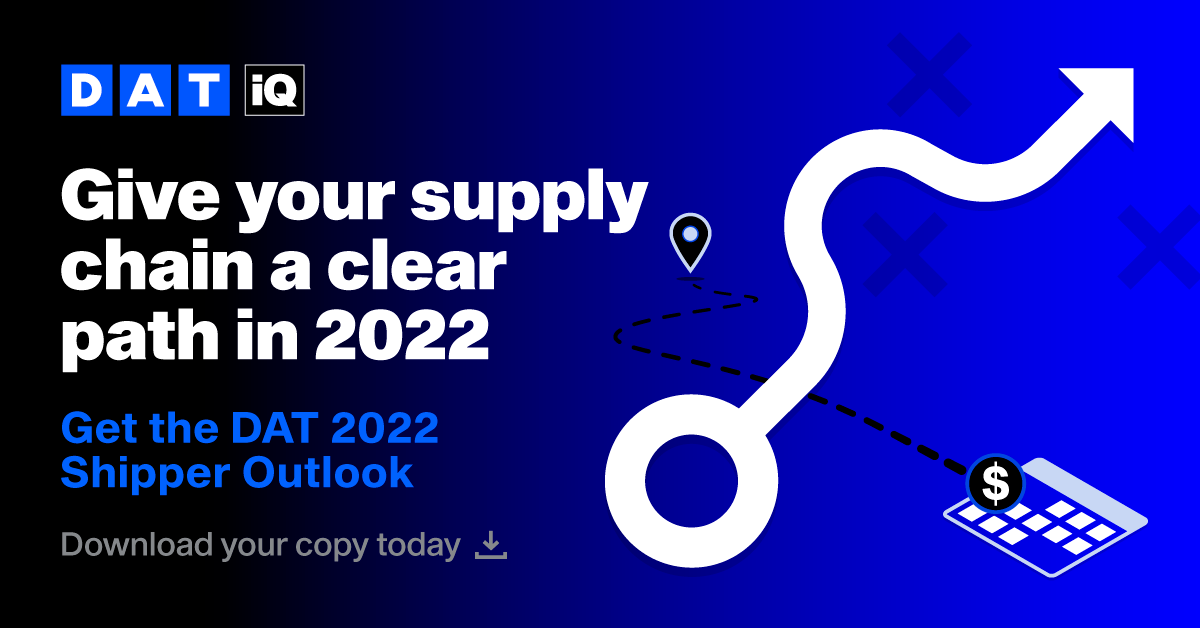Capacity shortages, supply chain disruptions and dramatic shifts in consumer buying habits produced a volatile transportation market in 2021. The tumultuous U.S. freight economy will continue well into 2022 and create a need for shippers to manage transportations costs by using data-driven strategies.
Give yourself the gift of improved transportation spend management by making sure these 4 areas are covered in your organization’s wish list during the holiday season.
- Transparency and flexibility in procurement
- Flexible routing guides
- Better data for planning and communications
- Find peace with your partners
Let’s examine why each area is important and discuss approaches to managing seasonal transportation volatility.
1. Flexible transportation procurement
Maintaining an agile supply chain network safeguards your ability to respond to disruptions and maintain control during a historic surge in freight transportation costs. To manage and reduce logistics costs, building flexibility into your transportation planning and procurement workflows makes for a more agile logistics operation.
Increasingly, this requires a deeper well of timely data and analytics. By understanding historic rates and performance – as well as current trends – you can identify which lanes and carriers merit the most cost-management focus.
2. Fail-proof routing guide
Your transportation contracts are binding in price, but not in volume. When tender rejections increase, you can ensure the effectiveness of your routing guide by:
- Building depth to avoid single points of failure.
- Increasing the use of “mini bids.”
- Applying a portfolio approach to procurement.
As logistics procurement becomes increasingly diverse, these efforts allow you to keep transportation pricing aligned with the overall marketplace. Importantly, you can facilitate a blend of asset and non-asset providers to plug routing guide leaks and create flexibility when you need it most.
3. Better data for better logistics planning and communications
Top shippers align their company goals with realistic transportation plans. A single source of real-time AND historical data from a trusted provider can empower transportation managers to create realistic strategies and secure executive sponsorship.
Large volumes of benchmarked rate data – custom fit to your freight lanes, shipment types and other variables – provide granular insights to effectively source capacity. Likewise, high quality data makes it possible to create strategies based on current transportation network conditions, and then gain executive buy-in through clear communications and performance reporting.
4. Peace with your transportation partners
Inflationary rate pressure is mounting on motor carriers and freight brokers. When creating and revising your transportation plans, it’s important to consider trends affecting these partners.
Carriers are bracing for major cost increases on the horizon. At the same time, brokers are experiencing surges in spot volume. Everyone is paying more for capacity on the road, and margins are dwindling despite higher volumes.
Market intelligence and forecasting tools backed by current rates improve your negotiating position with carriers, ensuring win-win scenarios for moving your freight. Meanwhile, with data-based validation for rates from brokers, you can ensure you’re not paying too much or too little while developing a sustainable, mutually beneficial partnership.
5. Solutions for the season of volatility
Normalcy will arrive as soon as transportation supply catches up with demand. Until then, freight volumes and upward rate pressures will respond to familiar pain points.
Growing freight demand, constraints on new capacity, a severe driver shortage and continued supply chain disruption will persist. Ongoing changes in consumer buying habits, new government spending and an uneven recovery will create new winners and losers in the freight market.
You can control and reduce logistics costs with accurate and timely freight intelligence.
DAT Freight & Analytics’ powerful transportation analytics solutions, DAT iQ, provides an aggregated and cohesive data set to benchmark rates and adapt to market trends to suit your organization’s specific needs.
With DAT iQ, you can:
- Plan for network disruptions before they happen.
- Source capacity for surge volumes and routing guide leakage.
- Align communications.
- Evaluate and negotiate rates.

To help you chart and execute a successful transportation strategy through seasonal volatility, we created the DAT iQ Solutions for Shipper Success Guide. Read it today to see how DAT Freight & Analytics can help you and your logistics team navigate seasonal challenges with confidence.
Also, to learn how DAT iQ can help you close out the year strong and drive momentum into the new year, visit www.dat.com/shipperiq

